来源:cnblogs.com/youzhibing/p/15354706.html
疑虑背景 疑虑描述最近,在进行开发的过程中,发现之前的一个写法,类似如下:
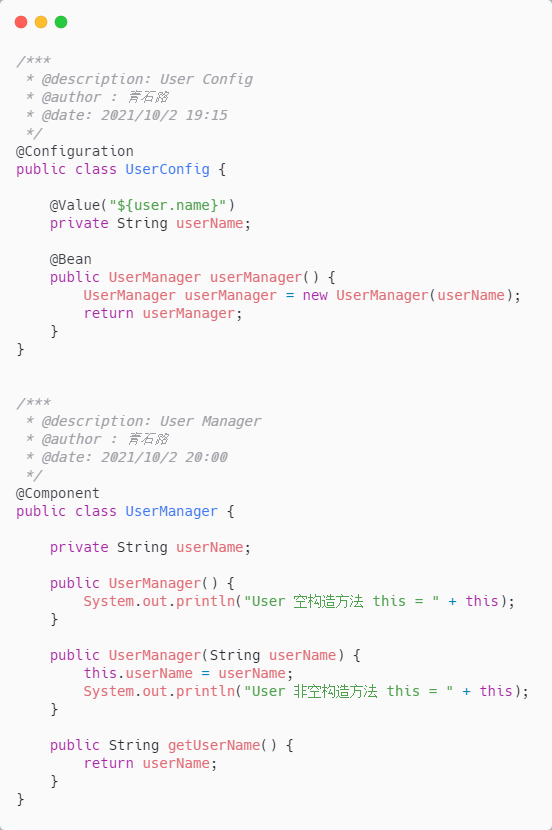
以我的理解,@Configuration 加 @Bean 会创建一个 userName 不为 null 的 UserManager 对象,而 @Component 也会创建一个 userName 为 null 的 UserManager 对象。
那么我们在其他对象中注入 UserManager 对象时,到底注入的是哪个对象?
因为项目已经上线了很长一段时间了,所以这种写法没有编译报错,运行也没有出问题。后面去找同事了解下,实际是想让:

生效,而实际也确实是它生效了。那么问题来了:Spring 容器中到底有几个 UserManager 类型的对象?
Spring Boot 版本项目中用的 Spring Boot 版本是:2.0.3.RELEASE。对象的 scope 是默认值,也就是 singleton。
Spring Boot 基础就不介绍了,推荐下这个实战教程:
结果验证https://github.com/javastacks/spring-boot-best-practice
验证方式有很多,可以 debug 跟源码,看看 Spring 容器中到底有几个 UserManager 对象,也可以直接从 UserManager 构造方法下手,看看哪几个构造方法被调用,等等。
我们从构造方法下手,看看 UserManager 到底实例化了几次。
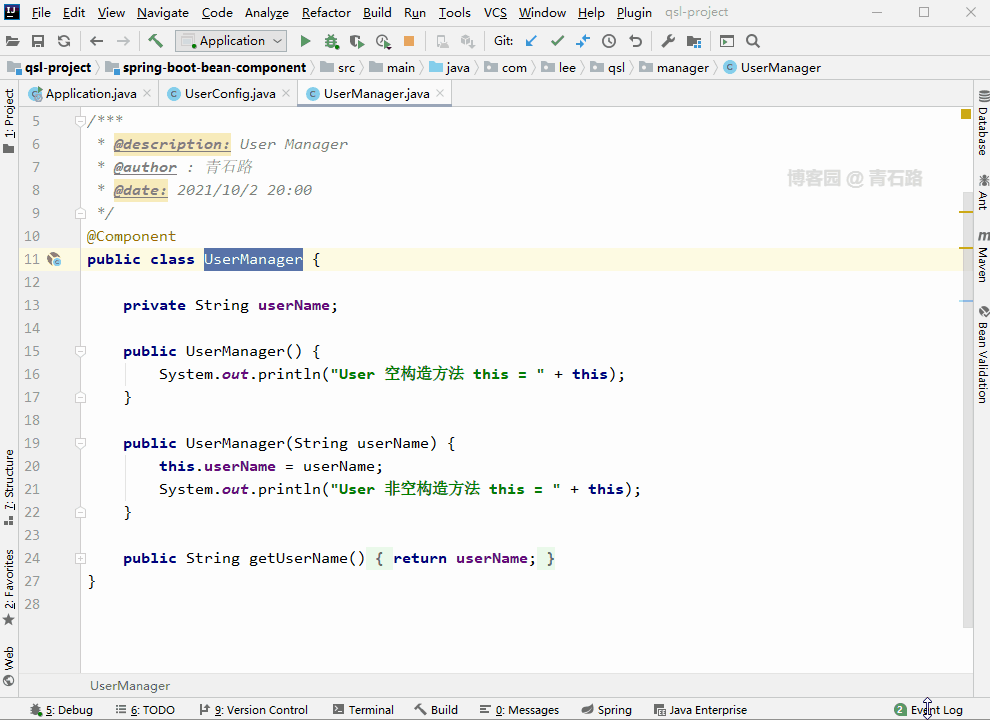
只有有参构造方法被调用了,无参构造方法岿然不动(根本没被调用)。如果想了解的更深一点,可以读读:Spring 的循环依赖,源码详细分析 → 真的非要三级缓存吗?
https://www.cnblogs.com/youzhibing/p/14337244.html
既然 UserManager 构造方法只被调用了一次,那么前面的问题:到底注入的是哪个对象。答案也就清晰了,没得选了呀,只能是 @Configuration 加 @Bean 创建的 userName 不为 null 的 UserManager 对象。
问题又来了:为什么不是 @Component 创建的 userName 为 null 的 UserManager 对象?
源码解析@Configuration 与 @Component 关系很紧密。
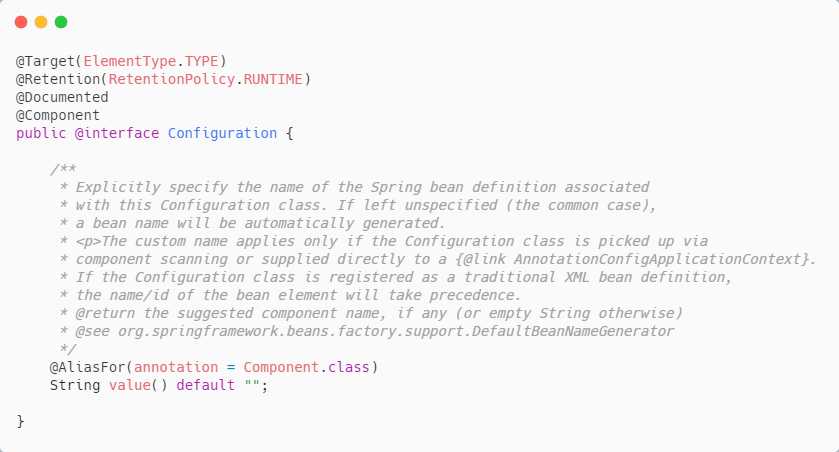
所以@Configuration能够被component scan。
其中 ConfigurationClassPostProcessor与@Configuration 息息相关,其类继承结构图如下:

它实现了BeanFactoryPostProcessor接口和PriorityOrdered接口。
关于 BeanFactoryPostProcessor,可以看看:
https://www.cnblogs.com/youzhibing/p/10559337.html
从AbstractApplicationContext的refresh方法调用的invokeBeanFactoryPostProcessors(beanFactory)开始,来跟下源码。

此时完成了com.lee.qsl包下的component scan ,com.lee.qsl包及子包下的 UserConfig、UserController和UserManager都被扫描出来。注意,此刻@Bean的处理还未开始,UserManager是通过@Component而被扫描出来的;此时Spring容器中beanDefinitionMap中的 UserManager是这样的。
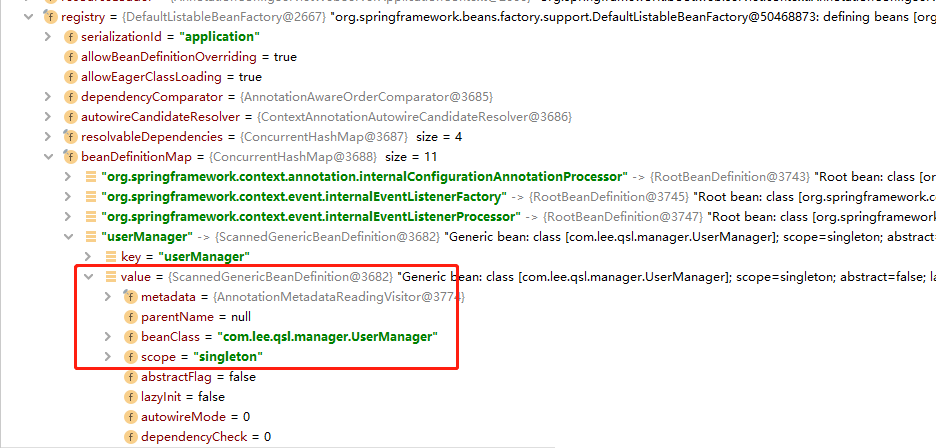
接下来一步很重要,与我们想要的答案息息相关。
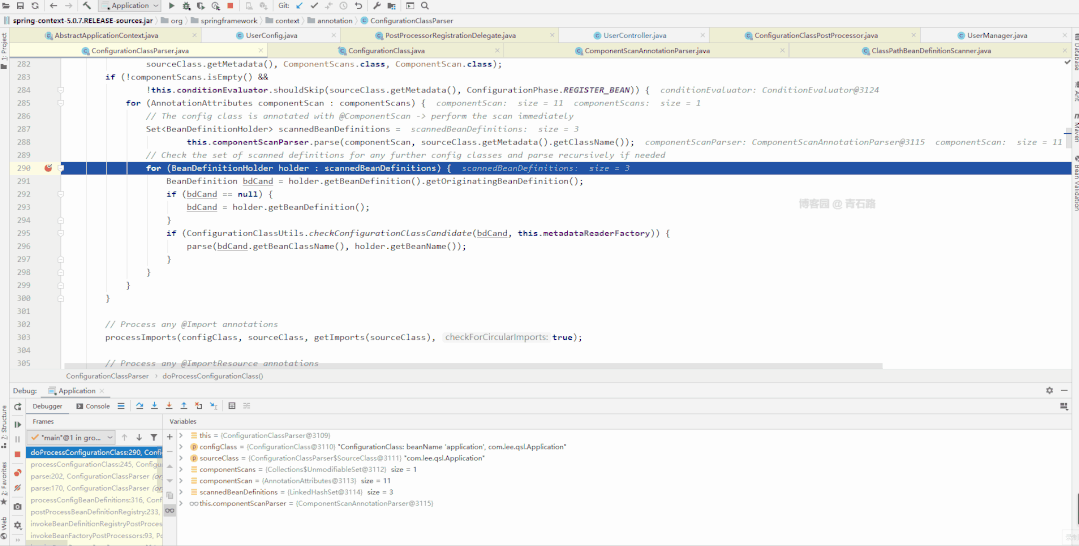

循环递归处理UserConfig 、UserController和UserManager,把它们都封装成 ConfigurationClass ,递归扫描 BeanDefinition。循环完之后,我们来看看 configClasses。
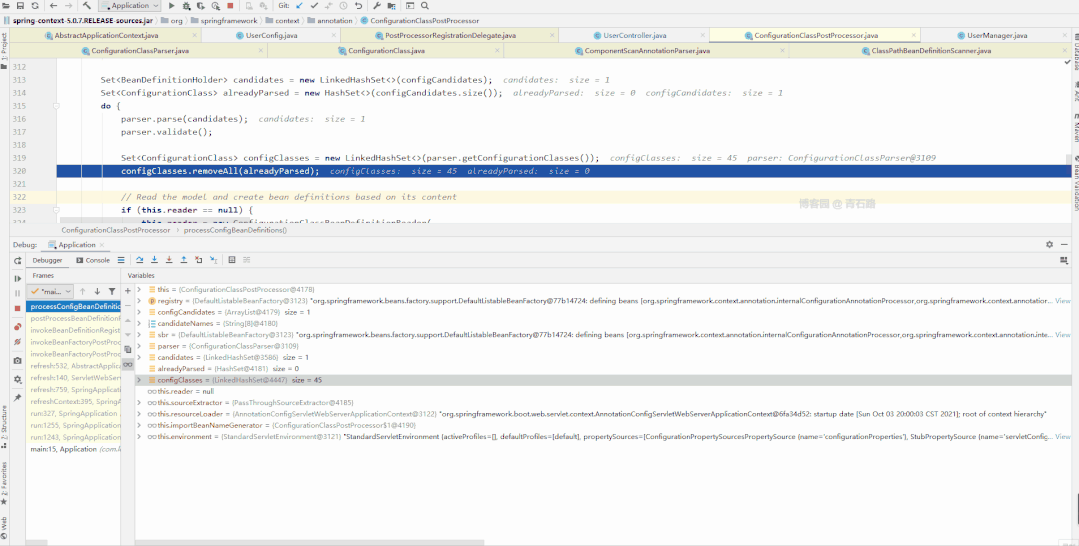
UserConfig bean定义中beanMethods中有一个元素 [BeanMethod:name=userManager,declaringClass=com.lee.qsl.config.UserConfig]。
然后我们接着往下走,来仔细看看答案出现的环节。
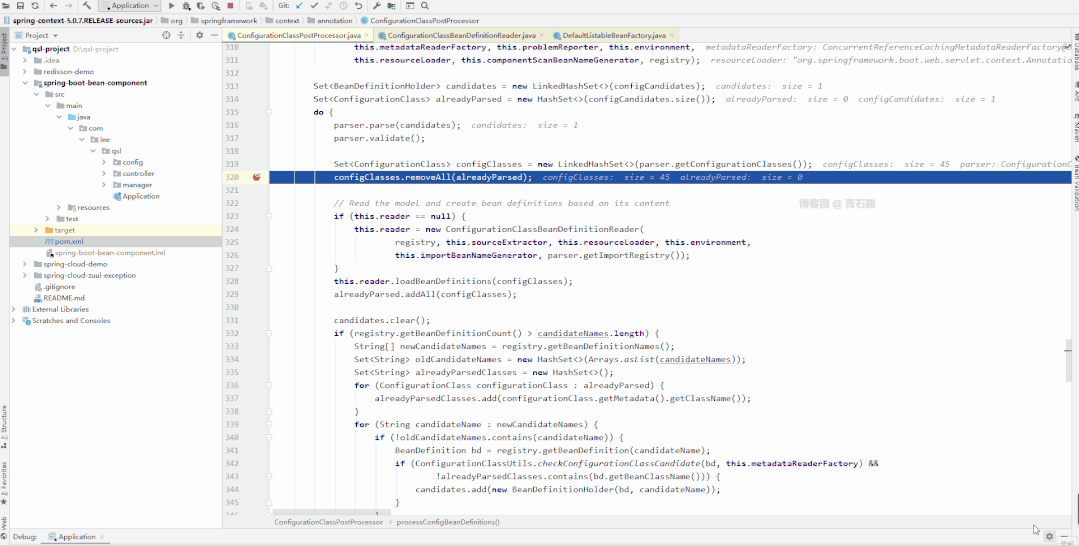
是不是有什么发现?@Component修饰的UserManager定义直接被覆盖成了@Configuration +@Bean修饰的UserManager定义。Bean定义类型也由ScannedGenericBeanDefinition替换成了ConfigurationClassBeanDefinition。
后续通过BeanDefinition创建实例的时候,创建的自然就是@Configuration+@Bean修饰的 UserManager,也就是会反射调用UserManager的有参构造方法。
自此,答案也就清楚了。Spring 其实给出了提示:
2021-10-03 20:37:33.697 INFO 13600 --- [ main] o.s.b.f.s.DefaultListableBeanFactory : Overriding bean definition for bean 'userManager' with a different definition: replacing [Generic bean: class [com.lee.qsl.manager.UserManager]; scope=singleton; abstract=false; lazyInit=false; autowireMode=0; dependencyCheck=0; autowireCandidate=true; primary=false; factoryBeanName=null; factoryMethodName=null; initMethodName=null; destroyMethodName=null; defined in file [D:\qsl-project\spring-boot-bean-component\target\classes\com\lee\qsl\manager\UserManager.class]] with [Root bean: class [null]; scope=; abstract=false; lazyInit=false; autowireMode=3; dependencyCheck=0; autowireCandidate=true; primary=false; factoryBeanName=userConfig; factoryMethodName=userManager; initMethodName=null; destroyMethodName=(inferred); defined in class path resource [com/lee/qsl/config/UserConfig.class]]
只是日志级别是 info ,太不显眼了。
Spring升级优化可能Spring团队意识到了info级别太不显眼的问题,或者说意识到了直接覆盖的处理方式不太合理。所以在Spring 5.1.2.RELEASE (Spring Boot 则是 2.1.0.RELEASE )做出了优化处理。
推荐一个 Spring Boot 基础教程及实战示例:
https://github.com/javastacks/spring-boot-best-practice
我们来具体看看。
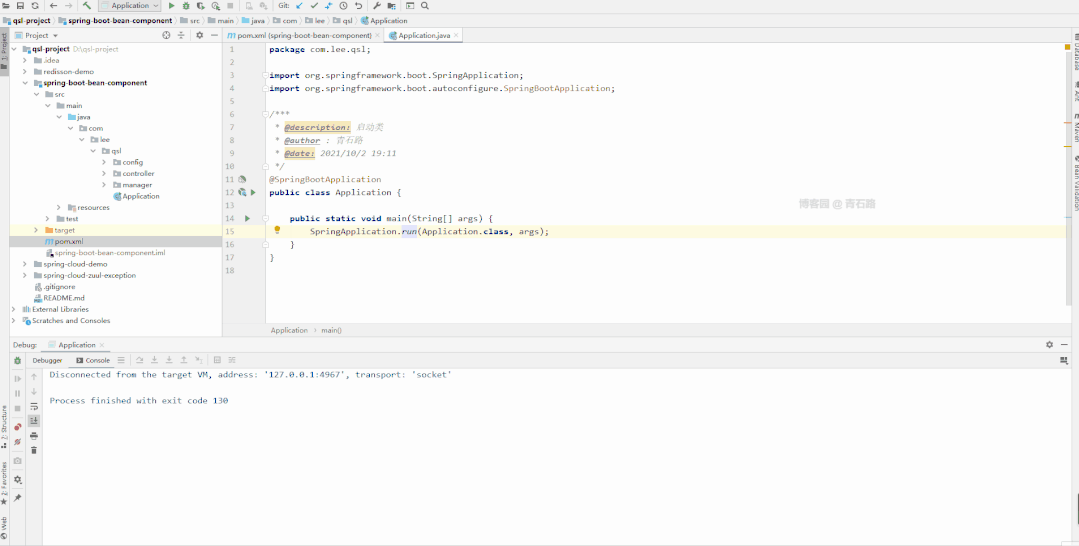
启动直接报错,Spring也给出了提示。
The bean 'userManager', defined in class path resource [com/lee/qsl/config/UserConfig.class], could not be registered. A bean with that name has already been defined in file [D:\qsl-project\spring-boot-bean-component\target\classes\com\lee\qsl\manager\UserManager.class] and overriding is disabled.
我们来跟下源码,主要看看与Spring 5.0.7.RELEASE的区别。
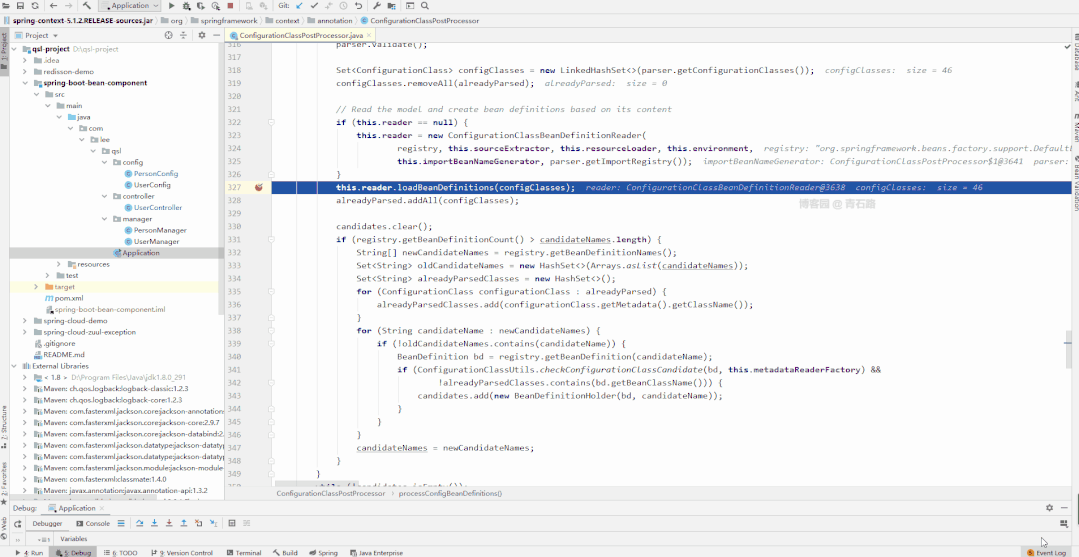
新增了配置项allowBeanDefinitionOverriding来控制是否允许BeanDefinition覆盖,默认情况下是不允许的。我们可以在配置文件中配置:spring.main.allow-bean-definition-overriding=true ,允许BeanDefinition覆盖。这种处理方式是更优的,将选择权交给开发人员,而不是自己偷偷的处理,已达到开发者想要的效果。
总 结Spring 5.0.7.RELEASE ( Spring Boot 2.0.3.RELEASE )支持@Configuration+ @Bean与@Component同时作用于同一个类。启动时会给info级别的日志提示,同时会将@Configuration+@Bean修饰的 BeanDefinition覆盖掉@Component修饰的BeanDefinition。
也许Spring团队意识到了上述处理不太合适,于是在Spring 5.1.2.RELEASE做出了优化处理。增加了配置项:allowBeanDefinitionOverriding,将主动权交给了开发者,由开发者自己决定是否允许覆盖。
补充关于allowBeanDefinitionOverriding,前面有误,特意去翻了下源码,补充如下。Spring 1.2引进DefaultListableBeanFactory的时候就有了private boolean allowBeanDefinitionOverriding=true;,默认是允许BeanDefinition覆盖。
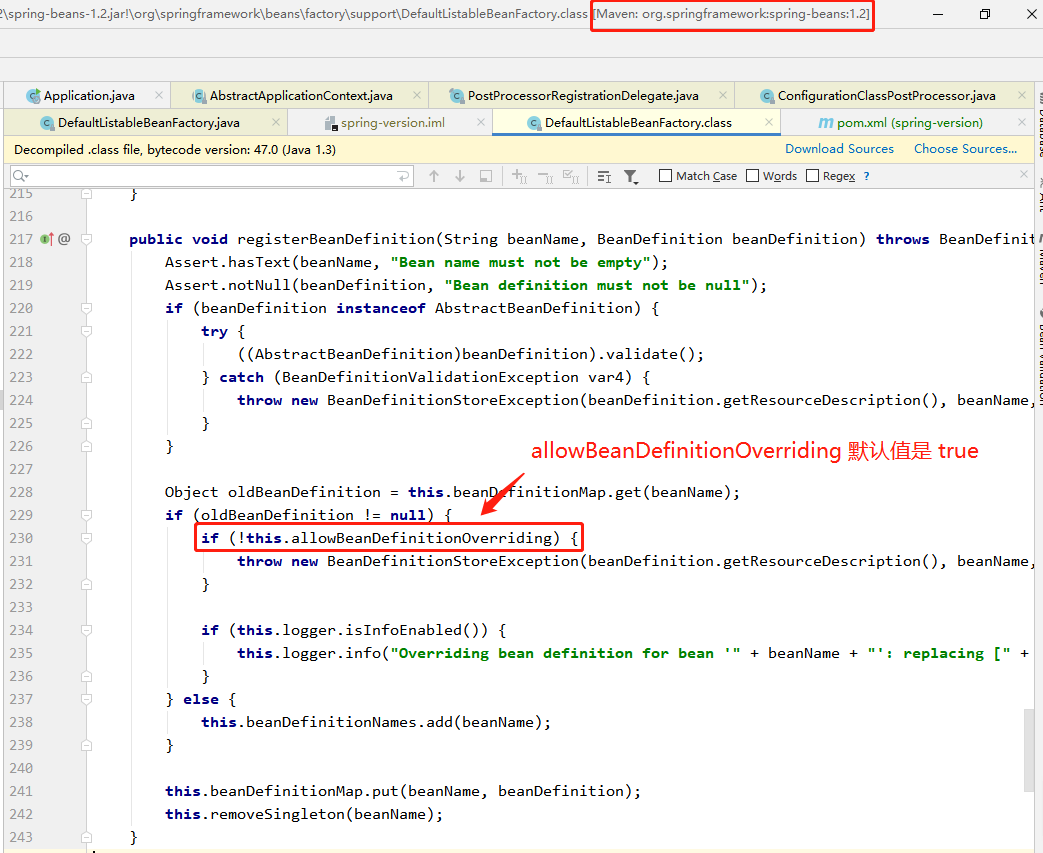
Spring4.1.2引进isAllowBeanDefinitionOverriding()方法。

Spring自始至终默认都是允许BeanDefinition覆盖的,变的是Spring Boot ,Spring Boot 2.1.0之前没有覆盖Spring 的allowBeanDefinitionOverriding默认值,仍是允许BeanDefinition覆盖的。
Spring Boot 2.1.0中SpringApplication定义了私有属性:allowBeanDefinitionOverriding。
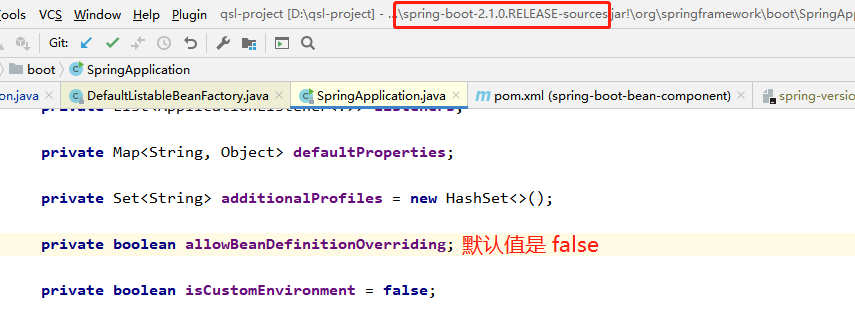 没有显示的指定值,那么默认值就是false ,之后在Spring Boot启动过程中,会用此值覆盖掉Spring中的allowBeanDefinitionOverriding的默认值。
没有显示的指定值,那么默认值就是false ,之后在Spring Boot启动过程中,会用此值覆盖掉Spring中的allowBeanDefinitionOverriding的默认值。
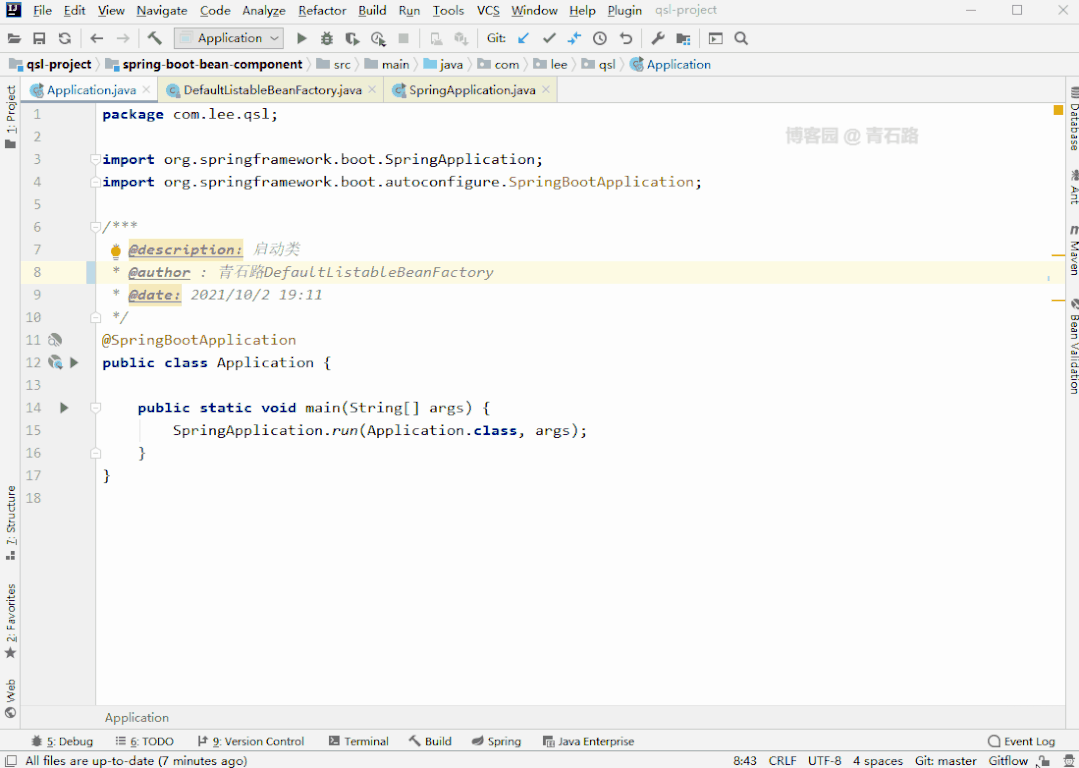
关于allowBeanDefinitionOverriding,我想大家应该已经清楚了。
近期热文推荐:
1.1,000+ 道 Java面试题及答案整理(2022最新版)
2.劲爆!Java 协程要来了。。。
3.Spring Boot 2.x 教程,太全了!
4.别再写满屏的爆爆爆炸类了,试试装饰器模式,这才是优雅的方式!!
5.《Java开发手册(嵩山版)》最新发布,速速下载!
觉得不错,别忘了随手点赞+转发哦!
